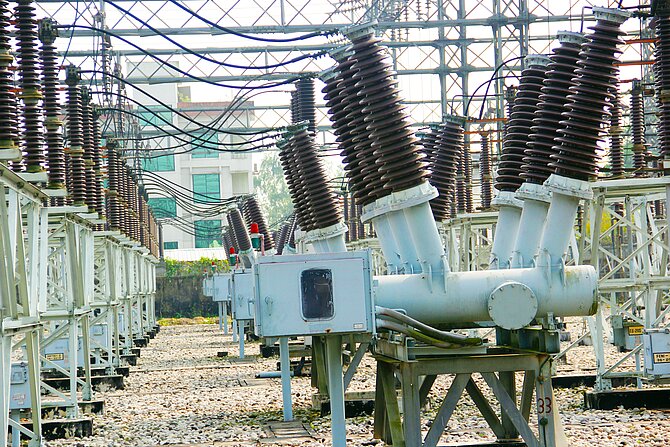Find out today what the legal world will be talking about tomorrow.
11.05.2022
Order for preservation measures under Monument Protection Law - What may monument protection impose on house owners?

A leaking roof, crooked walls and plaster falling from the house wall onto the pavement. The appointment with the building contractor is in the distant future and building costs are constantly rising. Many owners of listed unrenovated properties are familiar with these and other problems too well.
The additional requirement on property owners by the protection of historical monuments to reduce/ eliminate further decay by means of various costly measures – be it external scaffolding, emergency roofing, etc. – can lead to high expenses and thus to considerable financial burden very quickly. This article deals with the question of the extent to which the competent monument protection authority may impose security measures upon property owners.
Monument protection is principally a matter for the federal states, i.e. it depends on the Monument Protection Law (german: Denkmalschutzgesetz – DSchG) of the respective federal state. However, all federal Monument Protection Laws have in common that the person entitled to dispose of a listed property is obliged to maintain and repair it within the bounds of what is reasonable, cf. e.g. § 8 para. 1 DSchG Berlin, § 7 para. 1 DSchG Brandenburg and § 7 para. 1 DSchG Hamburg.
If property owners do not comply with this obligation, the monument protection authority can order the implementation of a reasonable safeguarding measure and, if necessary, enforce it - at the owner's expense. But: If the order is not reasonable, it can usually be successfully challenged in court.
But what exactly can be considered a “reasonable” burden on property owners? The courts have dealt with this question time and again. Only recently, the Higher Administrative Court of Magdeburg (OVG Magdeburg, decision of 05 January 2022, ref. 2 M 131/21) ruled on a case of the ordering of such security measures and confirmed its case law that the assessment of reasonableness does not depend on the subjective economic circumstances of the owner, but rather on the "objective economic efficiency calculation in relation to the protected object". This is in line with German case law generally.
The following section seeks to address the implications of this rulings, as well as the concrete criteria of a “reasonable” order.
1 There is no uniform standard. As it is so often the case in law, the following also applies here: the permissibility of a measure, or in this case the reasonableness of a preservation order by the Office for the Protection of Monuments, must always be assessed on the basis of the individual case. Therefore, the case law is not necessarily readily applicable to a specific fact scenario. The case law can (and will) only provide the office and the owner with indications for the assessment of an individual case. There is no hard and fast rule as to the reasonableness of certain safety measures, such as supporting a roof structure, in a building at high risk of collapse.
2 What is objectively economic? From the point of view of case law, the so-called "objective economic efficiency calculation in relation to the object of protection" is decisive for reasonableness. The reasonableness is to be assessed on the basis of a comparison of the expected investment and management costs with the possible income from use. In simple terms, a cost-benefit calculation is conducted over a period of several years (sometimes up to 30 years). In so doing, the costs for the preservation and renovation of the property (including the ordered security measures) are compared with the expected rental income or the utility value of the listed property. If this consideration leaves the owner with an - albeit small - surplus ("black zero"), the measure is still considered reasonable. It is important that the owner need not contribute financial resources from his or her assets to the preservation of the monument in the long term. The property must therefore "pay for itself" in the long run (cf. BayVGH, judgement of 27.09.2007 - 1 B 00.247).
3. The individual ability to pay is irrelevant. In principle, the financial possibilities of the property owner are irrelevant. It is therefore not important whether the owner can afford the security measure at all. If necessary, the security measure shall even be financed by loans, etc., whereby the burdens resulting from this in turn flow into the profitability calculations. Furthermore, it should be borne in mind that many measures under monument protection law are subsidised by taxes.
4. Purchased as seen. If, at the time of the purchase, the property was already in a condition clearly necessitating renovation – and thus, possibly protection – it is all the more difficult for the owner to explain why the protection measure was not reasonable for him. From the point of view of the monument protection, he has - to put it simply - visibly placed himself in a possible cost trap. The same applies to the heir who, knowingly, accepted a property in need of renovation.
5. Preservation of the property vs. demolition and new construction. In practice, it is often argued that a preservation measure is unreasonable if it leads to higher financial burdens than would arise from demolishing and rebuilding the house. Even if this often seems difficult to understand for the owners concerned, an argument to this end cannot be put forth with regards to monument protection. It is precisely the purpose of monument protection to preserve a building that would not be worth preserving purely for economic reasons.
If the monument protection authority orders a certain safeguarding measure to be carried out, it is worthwhile to check on the basis of the aforementioned points whether the ordered measure can be considered reasonable in the sense of the economic efficiency calculation and thus permissible. Often, a reduction of the package of measures can be achieved, as monument protection authorities often overshoot the mark when issuing preservation orders.
In case of any doubts as to the reasonableness of the measure, we advise seeking qualified legal advice.
Authors



